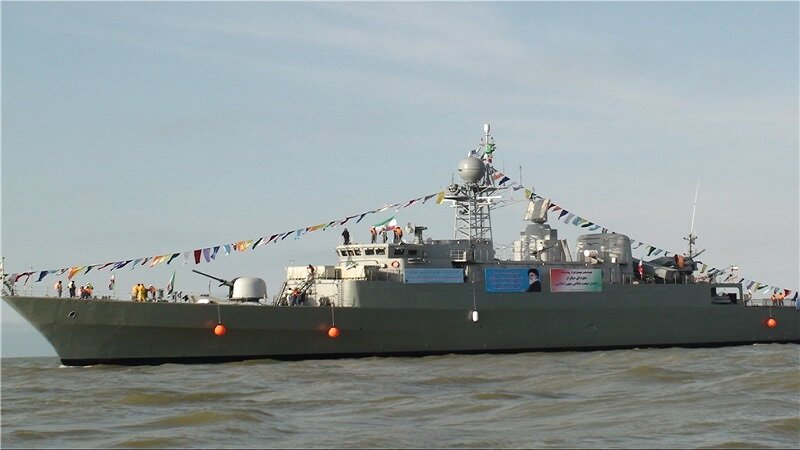Iran’s Damavand-2 Destroyer to be armed with hypersonic missiles

TEHRAN- The Damavand-2 destroyer will soon be armed with a hypersonic missile, Iranian Navy Commander Shahram Irani announced on Monday, a step that he said will greatly bolster Iran’s naval power.
The advanced Moudge-class warship, the Damavand destroyer, which is entirely Iranian, is an improved version of the Jamaran destroyer.
The destroyer was built thanks to the collaboration between Defense Ministry experts, armed forces including the Navy, and knowledge-based industries.
It has been effectively incorporated into the active combat unit of the Navy using cutting-edge technology.
Notable features of the Damavand destroyer include new radar and missile systems, thrust systems, and advanced weaponry.
Rear Admiral Irani stressed that the Damavand-2 destroyer’s equipment reflects cutting-edge technology in detection, identification, monitoring (DIM), and combat capabilities.
Additionally, the rear admiral said that the modern equipment can be utilized in all destroyers.
The Damavand-2 destroyer will include offensive missiles in addition to its defensive capabilities.
This development highlights Iran’s determination to increase its naval might and make sure it is prepared for any imminent dangers.
Media reported on Saturday that Damavand-2 destroyer will join the Navy’s northern fleet in the Caspian Sea in the near future.
The Mowj-class frigate is currently passing its operational tests in the northern fleet and that it will soon start its mission based on defined instructions.
Manouchehr Alipour, the deputy head of the Marine Industries Organization (MIO) and a marine industry counselor to the Iranian defense minister, said that the nation’s professionals had become proficient in designing and manufacturing destroyers.
“It took 12 years to build the first Jamaran-class destroyer. Later, the Damavand-1 was built in 8 years and Dena was delivered to the Navy after 6 years. We hope to deliver the Damavand-2 to the Navy in a much shorter time. We manufactured Damavand’s initial hull in 4 years, but the process to build the Damavand-2 took only 11 months,” Alipour stated.
He went on to add, “The reason for the amazing reduction in the time needed for designing the hull and building the destroyers was that we became proficient in designing and engineering destroyers and their equipment.”
In March 2015, the 100-meter-long destroyer Damavand-1, which weighs more than 1,300 tons, formally joined the Navy’s northern fleet.
But three years later, while the frigate was moored in the Caspian town of Bandar Anzali, it struck a seawall and sunk.
It was rescued from the water and put back into service. According to recent images, it is outfitted with a 76mm cannon and an anti-ship cruise missile launcher.
In recent years, the Iranian Navy has become self-sufficient in producing both surface and subsurface ships.
In order to safeguard naval channels and ensure the safety of commercial ships and tankers, it has also boosted its presence in international waterways.
Back in May, Iran’s 86th Naval Fleet, which included the home-built Dena Destroyer, came home after the first round of the world in a mission dubbed “360-Degree”.
